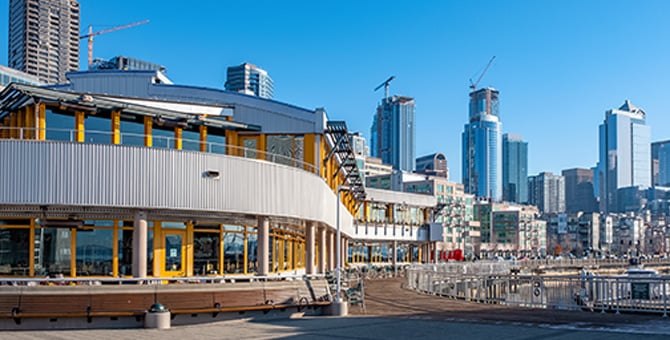Small- and medium-size enterprises (SMEs) provide just under half of all jobs amongst employers in our District. And they felt the impacts of COVID-19 acutely. Here’s an overview from our latest First Glance 12L report.
Job losses
SMEs shed more than 15% of their employees over the twelve months ending April 2020. Only some of those jobs came back through June. That’s according to stats from ADP, a payroll processing firm.
Hard-hit sectors
Job losses were often a symptom of stresses facing SMEs. For instance, in the accommodation and food services and “other” services sectors, which includes repair and personal services, the need for social distancing changed how we do business at restaurants, hair salons, nail salons, spas, and repair shops.
Thin financial cushions to start
We know many SMEs were operating with thin financial cushions before the pandemic. The New York Fed’s Survey of Small Business Credit, conducted during the second half of 2019, noted that two thirds of surveyed employer SMEs faced financial challenges in the prior year. At the time, 17% of surveyed SMEs in the San Francisco Fed’s Twelfth District indicated they would have to close or sell the business if they experienced a two-month loss in revenues.
The Paycheck Protection and Main Street Lending Programs may help bridge the gap. However, some SMEs may ultimately liquidate or pursue reorganization under “Subchapter V” of the bankruptcy code, created under the Small Business Reorganization Act of 2019.
Paycheck Protection Program (PPP) slow start
Small Business Administration (SBA) emergency programs had a slow start in the District, but coverage improved over time. Small Business Pulse Survey data from the Census Bureau suggests that less than half of District SMEs had received Paycheck Protection Program (PPP) assistance by early May, lower than the nationwide average. This was even though nearly three quarters had applied for PPP loans by that point. However, by June 20, nearly 70% of surveyed District SMEs had received PPP money, and roughly 22% had obtained Economic Injury Disaster Loans (EIDLs).
Implications for banks
Commercial banks, which are exposed directly and indirectly to many District SMEs, will be influenced heavily by their financial performance. The District’s banks lend to SMEs as well as to the owners of commercial buildings they often occupy. These exposures have been magnified recently by the rapidly-deployed PPP program. Although the SBA offered financial inducements to encourage lender participation in PPP and credit risk is mitigated by SBA forgiveness and guarantees, the program poses its own set of compliance, fraud, and litigation risks.
For more details, visit the full First Glance 12L report for Q120.
The views expressed here do not necessarily reflect the views of the management of the Federal Reserve Bank of San Francisco or of the Board of Governors of the Federal Reserve System.
